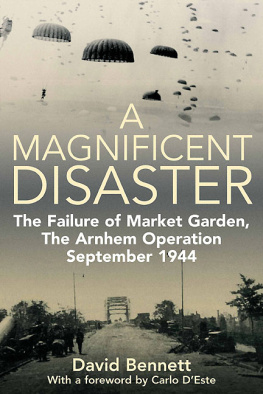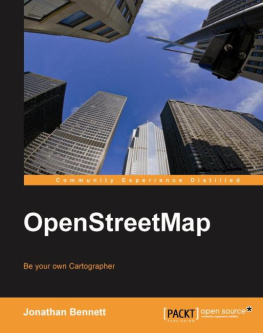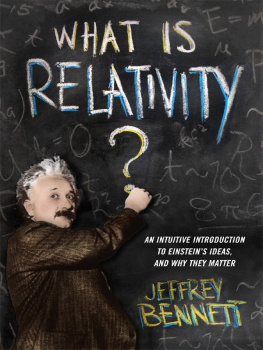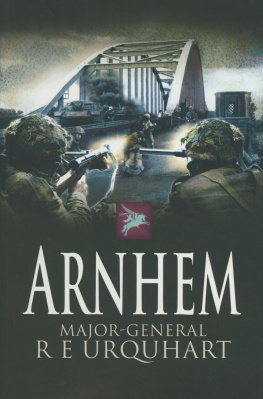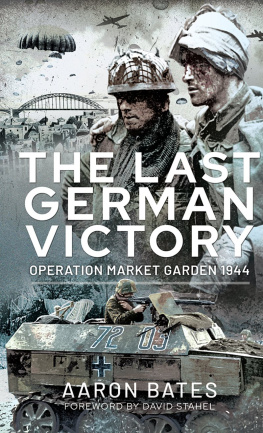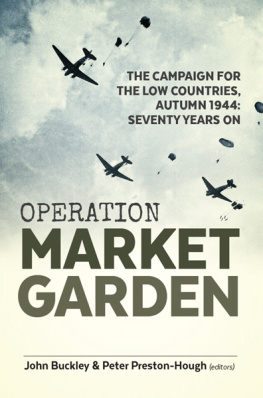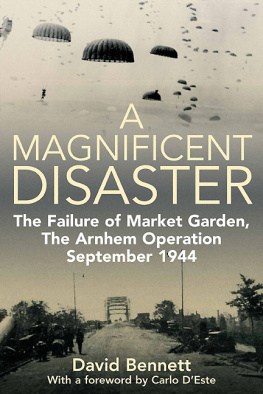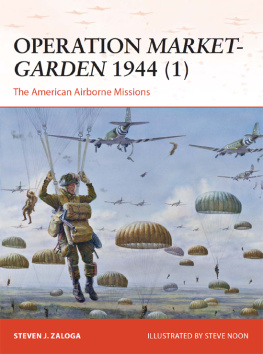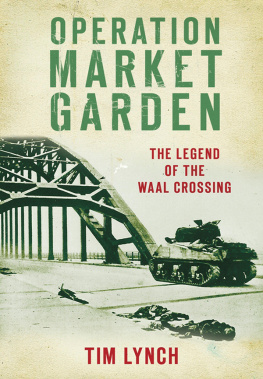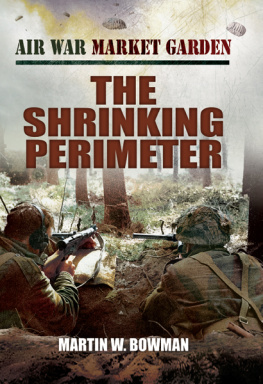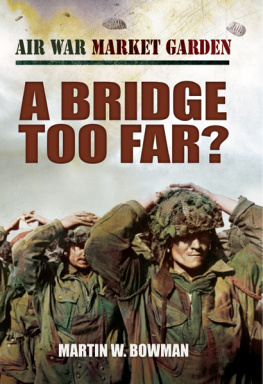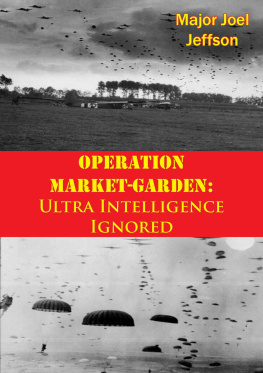ACKNOWLEDGMENTS
This book would not have been possible without the help, advice and critical comments of Carlo DEste, Brian Urquhart, Russell Kennedy, Anna Nitoslawska, Marikje Dollois, Ivor Green and Tom Goss. Special thanks are due to Henk Duinhoven, who generously shared with me his immense knowledge of the history and topography of the Battle of Arnhem Oosterbeek. I also received valuable help from Barbara Derkow Disselbeck, Nora Ct, Peter Stachura, George MacDonnell, Elsie Lafontaine and Nancy Stroud of the Canadian Department of National Defence Library and Dr. Andrzej Stuchitz of the Polish Institute and Sikorski Museum, London. Jean Bradburn tracked down rare articles and lent me Arnhem memorabilia belonging to her father-in-law, John Bradburn of the Second South Staffs. For interviews and conversations, I am grateful to Brian Urquhart, Tony Hibbert, Russell Kennedy, Ken Fleet, John Mills, Leonard Mackiewicz, Robert Taylor, Ted Lawson and Stan Fields.
Since relaxed conversation is as important to historical interpretation as reasoned inference from the written sources, I am grateful to my friends, Tom OBrien, Mike Wright, Jack Bennett, a veteran of the U.S. 525th Engineer Company in the 194445 campaign, the late Dick Martin and the late Kurt Heine, formerly a signaller with the Fifth Waffen-SS Division Wiking. Ivor Green, formerly of the Royal Signals and REME, sent me critical comments on the passages dealing with communications at Arnhem and gave me a most valuable document: his wartime Specification Notes on the No. 19HP wireless set.
Equally, I express my deep thanks to Russell Kennedy, formerly Reconnaissance Officer of the Twenty-third Field Company, RCE, for his critical comments on the passages in the book dealing with the Arnhem evacuation, for supplying me with his memoir Whispers and Shadows, Arnhem Fifty Years Later and for extensive notes on Operations Berlin and Pegasus II. My agent, Arnold Gosewich and my editor, Robert Buckland, guided me in turning a promising manuscript into a viable book, while David Farnsworth of Casemate Publishing saw the book into print without any needless complications whatever. Any errors and misconceptions in the text are, of course, the responsibility of the author alone.
The chief intellectual debt in regard to this book is to Colonel Albert Seaton. In The Battle for Moscow, 194142 (1971), only one of Seatons many accomplished works, we see a historian with all the grasp of a professional soldier constructing and reconstructing a battle from the few available Russian sources and a profusion of those German. On these constructions rest the attribution of reason and motive, then an evaluation of military purpose and conduct. Since Seaton wrote before the era of interviewing participants in the battle, he relied, among other sources, on divisional histories, partly for narrative information and partly to lend color to a terrible battle against the weather and the terrain as well as the enemy. By todays standards, Seatons pioneering work is one of John Lockes underlaborer, essential basic history but old-fashioned. If the same accusation is levelled against this book, I can only plead that very many of the primary written sources have remained so far untouched and that A Magnificent Disaster should have been written a generation ago.
Tom Goss acted as navigator and historical consultant for a battlefield tour in September 2003, which included the Meuse-Escaut crossings, the German cemetery at IJsselstein, Nijmegen, Mook, the Groesbeek Heights, Wyler in Germany, Driel, Heveadorp, Oosterbeek and Arnhem. In blissful ignorance we passed the signs for the National Oorlogs-en Verzetzmuseum, wondering why the Dutch should make so much fuss about a clock museum. We realized our error and returned in haste to look at the splendid National War and Resistance Museum at Overloon, which contains some exceedingly rare exhibits, such as a restored 88mm flak gun, a towed Polsten light cannon and DUKW amphibians. If the 82nd Airborne had taken as much time to find a route off the Groesbeek Heights as we did in ascending them, they would never have reached Nijmegen! A further visit in September 2004 took in the 60th Anniversary of the Arnhem operation, Ede, the north bank of the Lower Rhine and the Deelen Airbase Museum.
Appendix I
Chronology of Events
| September 1: | Dieppe captured. |
| September 2: | Airborne Operation Comet first planned. |
| September 3: | Field-Marshal Montgomery orders an all-out effort to bounce the Rhine. Brussels liberated by the Guards Armoured Division. Deelen airfield and nightfighter control center bombed. |
| September 4: | General Eisenhower issues a general order to the Allied Expeditionary Force. Montgomery given control of First Allied Airborne Army. Antwerp captured by the 11th Armoured Division and the Belgian Resistance. |
| September 5: | Mad Tuesday: the German retreat reaches its height and begins to slow down. German evacuation of Fifteenth Army elements from the south bank of the Scheldt to Walcheren and South Beveland begins, through the ports of Breskens and Terneuzen. Field-Marshal Gerd von Rundstedt reappointed Commander-in-Chief West. Field-Marshal Walther Model retains command of Army Group B. Colonel-General Kurt Student ordered to the line of the Albert Canal as Commander, First Parachute Army. |
| September 6: | British Second Army plans for a ground advance articulated. Leading elements of the retreating II SS Panzer Corps arrive in the Arnhem area. Operation Comet repeatedly postponed. |
| September 7: | Gheel crossing of the Albert Canal. Beeringen crossing of the Albert Canal. |
| September 9: | Ostend occupied. |
| September 10 (D-7): | Market Garden definitively planned; first planning meeting held the same day. |
| September 12 (D-5): | De Groot Barrier crossing on the Meuse-Escaut Canal, the Neerpelt bridgehead for Market Garden, established. XII Corps takes over responsibility for the Gheel sector on the Albert Canal. |
| September 13 (D-4): | Aart crossing of the Meuse-Escaut Canal by XII Corps troops. Le Havre assaulted and captured. |
| September 15 (D-2): | Port of Marseilles opened. Models HQ, Army Group B, opens in Oosterbeek. VIII Corps Advance HQ opens near Beeringen. |
| September 16 (D-1): | Eisenhower authorizes Market Garden. Heinz Harmel, commander, 10th Waffen-SS Division Frundsberg, leaves for Berlin. Plans for the ground advance explained at a XXX Corps commanders meeting. |
| September 17 (D-Day): | Market Garden opens with massive bombing raids on Arnhem and points south, the airborne landings and the XXX Corps advance. The 9th Waffen-SS Division Hohenstaufen Reconnaissance Battalion moves south over the Arnhem Bridge to Nijmegen. First Allied Airborne Army units capture the Grave and Molenhoek bridges, the demolished Son bridge, and the north end of the Arnhem road bridge. Plans are abandoned to use the Aart bridgehead over the Meuse-Escaut Canal as the XII Corps starting point for Market Garden. Dutch national rail strike begins. |
| September 18 (D+1): | Brest falls to U.S. Ninth Army. Lommel bridgehead over the Meuse-Escaut Canal established as the XII Corps starting point for Market Garden. The 82nd Airborne captures the Honinghutie bridges. The 101st Airborne occupies Eindhoven; German air raid on the city, the same night. Most of British 3rd Division established in its VIII Corps sector. The leading elements of the 10th Waffen-SS Division Frundsberg arrive in Nijmegen. |
| September 19 (D+2): | VIII Corps establishes a bridgehead over the Meuse-Escaut Canal at Lille St. Hubert as its starting point for Market Garden. The Guards Armoured Division reaches Grave and Nijmegen. |

